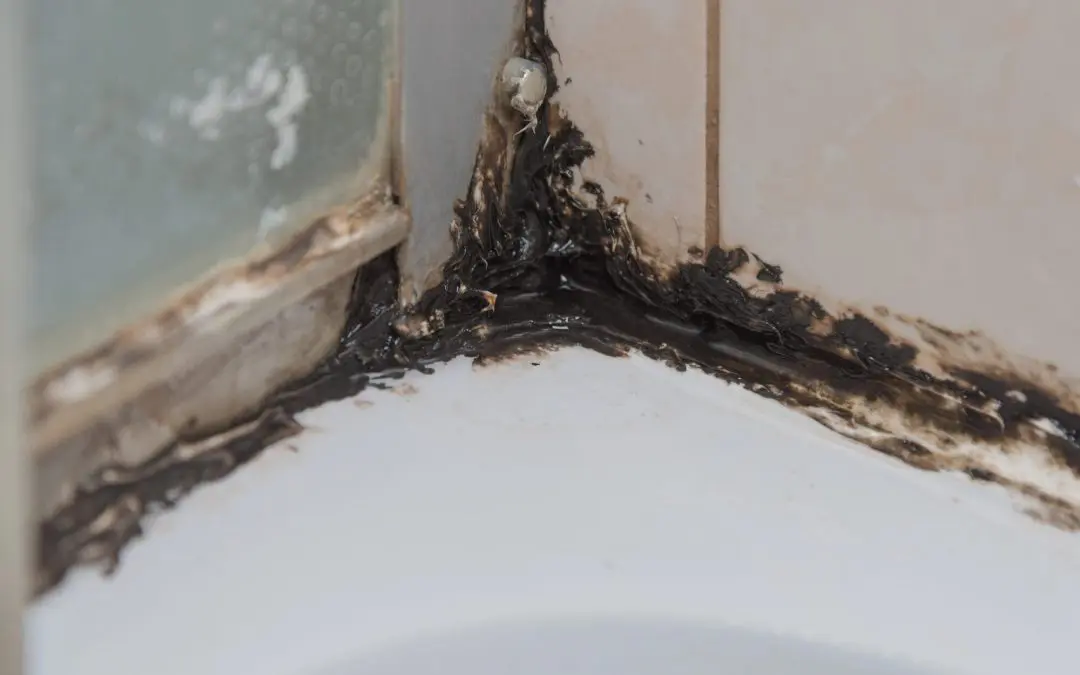Mold is a common problem in bathrooms due to the constant moisture and humidity. Preventing mold growth protects your home and reduces potential health risks. These tips will help you prevent mold in the bathroom so you don’t have to deal with the headaches of mold removal.
Ventilation is Critical to Prevent Bathroom Mold
Proper ventilation is crucial in preventing mold growth. Bathrooms are naturally humid spaces, and without adequate airflow, moisture can accumulate and create an ideal environment for mold. Ensure your bathroom has an effective exhaust fan that runs during and after showers. Keep the fan on for at least 30 minutes after turning the shower off. Opening windows when weather permits can help reduce humidity and promote air circulation.
Regularly Clean and Dry Surfaces
Routine cleaning is essential in controlling mold. Mold thrives on organic matter, so keep surfaces like tiles, grout, and shower curtains clean and dry. Use a mold-killing cleaner for areas prone to mold, such as shower stalls and around sinks. After cleaning, thoroughly dry all surfaces with a towel or squeegee to remove residual moisture. Pay special attention to corners, grout lines, and any areas where water might collect.
Repair Leaks Promptly to Prevent Bathroom Mold
Leaks can be a significant source of moisture in the bathroom, leading to mold growth. Regularly inspect your bathroom for any signs of leaks in pipes, faucets, and around the toilet. If you find a leak, address it immediately to prevent water from seeping into walls or flooring. Even small leaks can contribute to mold problems if left unchecked, so it’s important to act swiftly.
Use Mold-Resistant Materials
When renovating or updating your bathroom, consider using mold-resistant materials. For example, mold-resistant drywall and paint can help reduce the risk of mold growth. These materials are designed to withstand moisture better than traditional options and can provide an extra layer of protection against mold. Installing mold-resistant grout and caulk in tile areas can also help prevent mold from taking hold.
Manage Humidity Levels
Maintaining appropriate humidity levels is key to mold prevention. Ideally, the humidity in your bathroom should be kept below 50%. You can use a hygrometer to monitor humidity levels and a dehumidifier to decrease them. Try to limit activities that add excess moisture to the air, such as long, hot showers. Opt for shorter, cooler showers to reduce the amount of steam produced.
Ensure Proper Drainage to Prevent Mold in the Bathroom
Proper drainage is essential for preventing mold. Ensure that all bathroom fixtures drain efficiently. Any standing water, whether from a slow-draining tub or a leaky faucet, can contribute to mold growth. Regularly check and clean drain covers to prevent clogs and ensure water flows freely away from surfaces.
Maintain Bathroom Fixtures
Regular maintenance of bathroom fixtures can help prevent mold. This includes cleaning and inspecting areas around faucets, showerheads, and toilet tanks. Ensure that seals and caulking are intact and in good condition, as damaged seals can allow moisture to seep into areas where mold can thrive. Reapply caulk or replace seals as needed to maintain a barrier against moisture.
Preventing mold in the bathroom involves a combination of good practices, from ensuring proper ventilation and cleaning to repairing leaks and using mold-resistant materials. By following these steps, you can create a healthier environment and protect your bathroom from the damaging effects of mold.
FAQs
What type of exhaust fan is best for mold prevention?
A high-quality exhaust fan with a minimum of 50 cubic feet per minute (CFM) capacity is ideal for most bathrooms. Ensure the fan is properly installed and vented to the outside. A fan with a built-in humidity sensor can be particularly effective, as it automatically adjusts its operation based on moisture levels.
How can I prevent mold from growing on my shower curtain?
Choose a mold-resistant curtain made of materials like vinyl or polyester to prevent mold on your shower curtain. Regularly wash the curtain in hot water and dry it thoroughly. If you have a fabric curtain, consider using a washing machine with a mildew-fighting detergent and ensure it is completely dry before rehanging.
Can a dehumidifier help with mold prevention in the bathroom?
Yes, a dehumidifier can effectively manage humidity levels and prevent mold. It helps reduce excess moisture in the air, which is a key factor in mold growth. To maintain optimal humidity levels, place the dehumidifier in the bathroom or use it in adjacent rooms.
What should I do if mold keeps returning despite my efforts?
If mold continues to return, it may indicate an underlying issue, such as persistent leaks, poor ventilation, or inadequate cleaning practices. It’s essential to address these issues directly. In severe cases, consider consulting a professional mold remediation service to identify and resolve the root cause of the problem.
Esham Inspections provides mold inspections and other inspection services to the Eastern Shore of Maryland and Sussex County, Delaware. Contact us to book an appointment.

